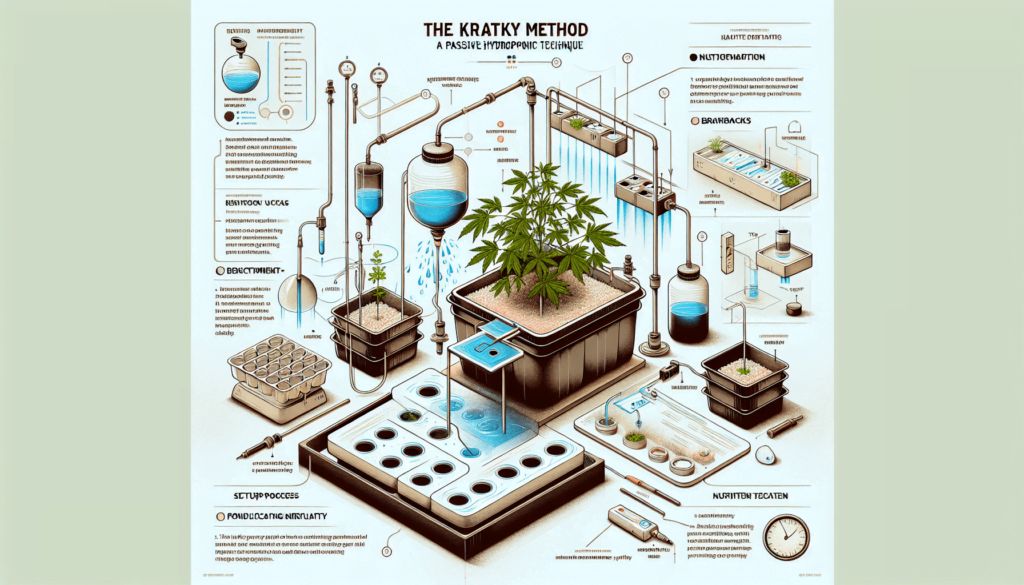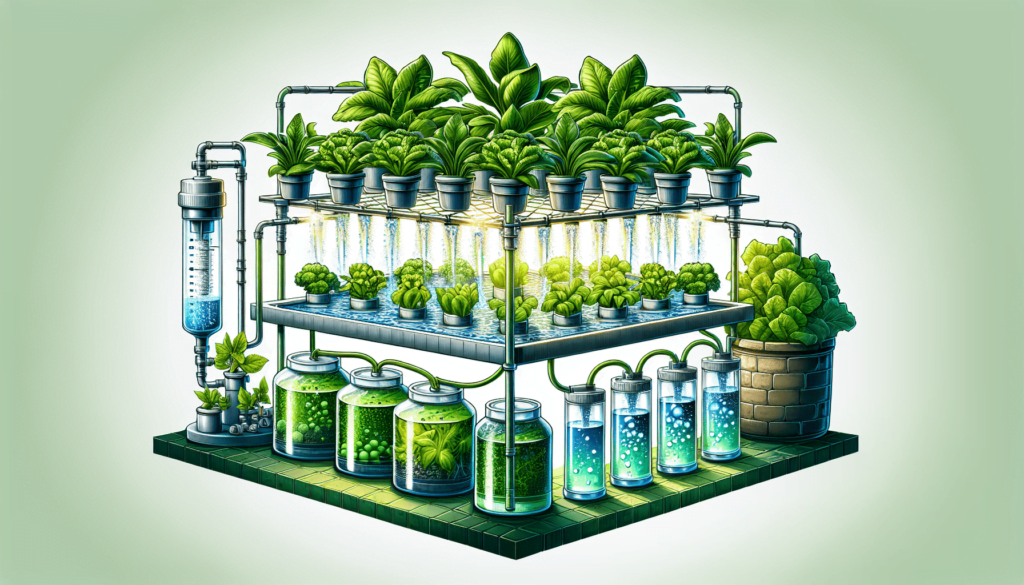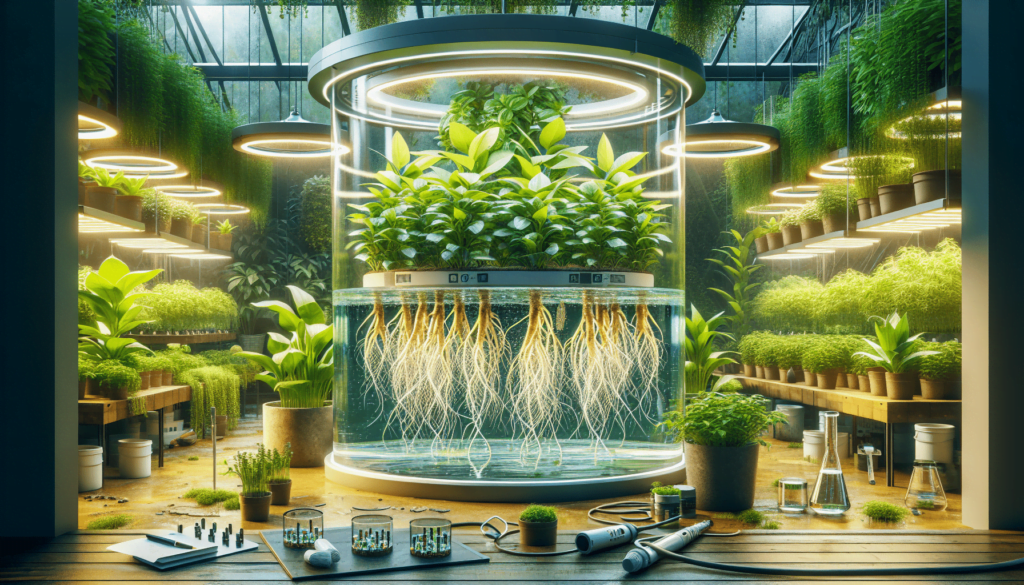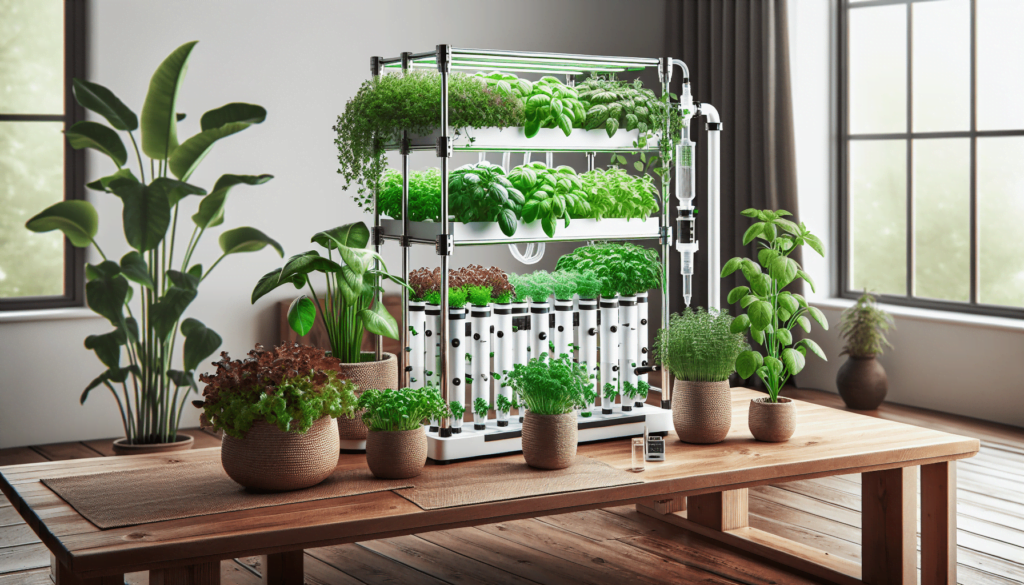Let’s embark on an enlightening journey together through the realms of the Kratky Method Hydroponics System. This comprehensive guide will be your beacon, illuminating the art and science of mastering this intriguing method. Through the process of demystifying this cultivation technique, we’ll bring you a step closer to lush, bountiful harvests using an innovative, non-circulating hydroponic system. Expect to be amazed by the simplicity and efficiency of the Kratky method, as you navigate your way to becoming a hydroponics ace.
Understanding the Principle of the Kratky Method
Welcome, gardening enthusiasts, to the intriguing world of hydroponics! Today, we’ll delve into the fundamental principles of the Kratky Method, a technique that’s garnering considerable interest amongst both novice and seasoned gardeners.
The fundamental principle of the Kratky Method
The Kratky Method revolves around a simple yet effective principle: it allows nature to dictate the process of plant growth, just without soil. Inside a water-filled tank or container, plants consume the nutrient-rich solution and, as the water level lowers, oxygen-rich air space is created, enabling the plant roots to breathe simultaneously. Remember, the Kratky Method strictly observes a non-interference strategy, letting the plants grow naturally after the initial setup.
The concept of passive hydroponics in Kratky Method
The Kratky approach is also recognized as a passive hydroponics system, a term denoting its non-dependence on electricity or moving components. It offers an extremely passive, hands-off method in which plants handle their nutrient and oxygen intake, making it a perfect choice for those of us who live a busy life yet wish to foster our green thumb.
How plants grow in a Kratky setup
Plants in a Kratky setup grow slightly differently than in typical soil environments. The roots dangle in the nutrient solution, slurping up water, nutrients, and oxygen, while also enjoying exposure to air. As the water level drops, the roots respond by creating more oxygen-absorbing roots in the newly formed air pocket, thereby ensuring optimal plant growth with minimal human intervention.
Benefits of the Kratky Method Hydroponics System
We’ve seen the fundamental principles of the Kratky method, but let’s discuss the benefits next. Why is the Kratky Method gaining such popularity?
Low maintenance requirements of the Kratky Method
Owing to its passive nature, the Kratky Method requires little to no maintenance. Once set up, it frees us from constant monitoring, watering, or troubleshooting tasks common with traditional gardening. It’s almost like having a self-driving car in the gardening world, conveniently taking our plants from seed to harvest.
Cost-effectiveness of the Kratky setup
One of the highlights of the Kratky Method is its cost-effectiveness. Considering it doesn’t require high-tech equipment or an intricate system setup and uses basic household items like containers and water, our budget stays relatively unscathed.
Why the Kratky Method is ideal for beginners
For newcomers venturing into the hydroponics realm, the Kratky Method is an exceptional starting point—uncomplicated, affordable, and low-maintenance. What more could we ask for as beginners?

Main Components of a Kratky Hydroponics System
Despite the Kratky system’s simplicity, understanding its components is a mandate. So, let’s get to it!
Types of containers used in a Kratky setup
The beauty of this method lies in its flexibility. We can utilize any container that holds water, is light-proof (to prevent algae growth), and with a lid to support the plants—we’re looking at jars, buckets, tanks, or tubs. Just remember, the size of the container should suit the plant size and growth period.
Understanding the role of nutrient solution
The nutrient solution, usually a blend of water and hydroponics nutrients, serves as the life-source for our plants—the entire plant growth depends on it. It substitutes the soil, providing the plants with all the crucial minerals they require for growth.
Importance of proper net pots or growing medium selection
Net pots house the seeds or seedlings and allow roots to access the nutrient solution. The growing medium, usually perlite, rock wool, or coco coir, holds the seeds or seedlings and enables root growth. While simple, selecting the right net pots and growing medium is foundational to successful Kratky gardening.
Step-by-step Setup of a Kratky Hydroponics System
Setting up a Kratky system is quite straightforward. Are you ready to get your hands dirty (figuratively)? Well, then, let’s start!
How to prepare the container for planting
To prepare the container, we start by ensuring it is clean and capable of preventing light intrusion. We drill appropriately sized holes on the lid, which will hold the net pots, ensuring a snug fit to avoid nutrient leakage.
Instructions for preparing the nutrient solution
Next is the preparation of the lifeblood of our plants—the nutrient solution. We mix a hydroponic fertilizer with water according to the recommended proportions on the fertilizer package. Remember, accuracy is essential here—too much or too little might harm the plants.
Correct positioning of plants in the Kratky setup
Our plants, via the medium and net pots, should sit right above the nutrient solution, allowing the roots to reach down and soak up the goodness. Ensure the medium and plant base remain moist but not overly saturated.
Creating the right environment for plant growth
Finally, for optimal plant growth, we need to place the setup in a location with an adequate light source (either artificial or natural), ambient temperature, and airflow.

Best Plants to Grow Using the Kratky Method
While the Kratky Method harnesses a vast range of plants, certain ones prosper more. Let’s see which these are:
Most suitable leafy greens for the Kratky setup
Leafy greens such as lettuce, spinach, kale, and arugula are excellent candidates for the Kratky Method. They have relatively short growth periods and smaller root systems—ideal for a hydroponic setup.
Fruit-bearing plants compatible with the Kratky Method
Fruit-bearing plants, like tomatoes, cucumbers, and peppers, can also adapt well to the Kratky setup, but they’ll need larger containers to accommodate their extensive growth and higher nutrient needs.
Herbs that thrive in a Kratky Hydroponics System
Whether you’re a gourmet cook or a tea enthusiast, herbs like basil, cilantro, mint, oregano, and parsley will surely flourish in a Kratky system, bringing incredible freshness right from your garden to your kitchen.
Maintaining your Kratky Hydroponics System
Now that our Kratky system is up and running, how do we maintain it?
Monitoring plant growth in the Kratky setup
Monitoring plant growth is a relaxing and rewarding practice; just observe the general health and growth progression of your greens. No regular watering or nutrient adjustments needed here!
How to replenish nutrient solution
One key point to remember is that we generally don’t replenish the nutrient solution in a Kratky setup due to its passive principle. However, in the case of larger, long-term plants where the water supply might deplete before maturity, a careful refill might be required.
Identifying and addressing common plant diseases
While the Kratky Method minimizes disease susceptibility, any yellowing leaves or stunted growth should be timely identified and addressed. Locate the cause, be it nutrient deficiency, pH imbalance, or disease, and act accordingly.
Troubleshooting Common Problems in Kratky Hydroponics
Just like any gardening method, the Kratky method isn’t without its hiccups. But fear not, as we’re here to troubleshoot!
Addressing nutrient deficiencies
Nutrient deficiencies can occur if the solution is inadequately prepared or if certain nutrients are lacking. Identifying the deficiency (through signs like discolored, curled, or spotted leaves) and tweaking the nutrient mix will correct this issue.
Preventing root rot issues
Root rot, the bane of all hydroponic systems, can still occur in Kratky setups due to overwatering or poor oxygenation. Ensuring good air exposure to roots and preventing over-saturation of the growing medium will help nip this issue in the bud.
Dealing with pests in a Kratky setup
Though hydroponics reduces pest problems substantially, infestations might still occur. Handpicking, using organic insect soaps or oils, or biological control methods like beneficial insects can help manage these unwanted guests.
Scaling Up: Advanced Kratky Hydroponics Techniques
Once we’ve mastered the Kratky Method basics, scaling up and exploring more advanced techniques seems like the natural progression. Here’s how to proceed:
Transitioning from small-scale to large-scale Kratky systems
Transitioning from smaller setups, like mason jars, to large containers, like bins or trays, necessitates changes in your gardening strategy. Larger systems require a more delicate balance of nutrient solution levels and may demand more caution to prevent disease outbreak due to increased number of plants.
Advanced nutrient solution management techniques
In larger setups where the nutrient solution may require replenishment, we might need to employ methods that maintain a stable nutrient solution level, which is vital for proper growth. A float valve system is an excellent example of such an advanced technique.
Incorporating automation in Kratky Hydroponics
Though the Kratky Method advocates for minimalism, once we’re more familiar with it, we can consider adding automated systems to enhance our setup. Here, innovations like automatic lights, temperature control, and even automated nutrient dosage systems could be a game-changer.
Impact of Kratky Hydroponics on Sustainability
Being innovators at heart, we must ponder on how the Kratky Method might favorably impact sustainability.
How the Kratky Method supports urban farming
With today’s increasing urbanization, the Kratky Method provides a sustainable option for city dwellers to grow fresh crops. Given its compact nature and minimal requirement of natural resources, it’s an urban farmer’s dream come true!
Water conservation in Kratky Hydroponics
The Kratky Method requires no constant water flow or aeration, meaning it uses significantly less water than traditional gardening methods. Plants consume water at their pace, which contributes to tremendous water conservation.
The role of Kratky Method in reducing carbon emissions
With decreased water usage comes reduced consumption of energy used to purify and transport this water. Additionally, localizing food production reduces transportation-related carbon emissions, making the Kratky Method a wise choice for the environment-conscious among us.
Case Studies of Successful Kratky Method Implementations
Hearing about successful Kratky Method implementations can be incredibly motivating, giving us a glimpse into practical applications and outcomes of this method.
Examples of successful small-scale Kratky setups
There are several accounts of hobby gardeners successfully growing a range of plants, from lettuce and kale to cilantro and basil, in small-scale Kratky systems. These systems are often set up in yards, balconies, or even indoors, where fresh greens are harvested for personal use.
Commercial farmers utilizing the Kratky Method
Commercial farmers are increasingly turning to the Kratky Method for sustainable, cost-effective farming. Its ease of setup, low maintenance, and efficient use of space make it an excellent option for profit-driven farming.
Outcome of academic research on Kratky Hydroponics
Academic research validates the effectiveness of the Kratky Method. Studies indicate the successful growth of various vegetables and fruits using this method, driving its adoption and adaptation across different climatic and economic conditions.
In summary, the Kratky Method of Hydroponics is an individual-friendly and sustainable approach to gardening. It embodies the beauty of nature’s simplicity, emphasizing minimalism while also championing impressive efficiency. Whether you’re an urban gardener, an academic, a commercial farmer, or just someone who loves to see plants thrive, the Kratky Method is worthy of exploration. Through knowledge, practical application, and continuous discovery, we can all harness the power of this innovative gardening technique for sustainable farming for generations to come.
Forum
Got something to share or a question to ask? Jump in and start a conversation! Whether it’s tips, advice, or just sharing your experiences, we’d love to hear from you. Don’t be shy—your input could inspire or help someone else!- This forum has 1 topic, and was last updated 10 months, 2 weeks ago by .
- Topic
- Voices
- Last Post
- You must be logged in to create new topics.


